Jan Bacher - a violin master (English translation)
15.11.2012 17:15 | Michaela Lejsková
Jan Bacher belongs to young and at the same time very talented masters of his handicraft. At first sight, this man is in tune with himself as well as with his own instruments. He graduated from a violin school of Mittenwald with the specialisation violin making. He has gathered his experience in Germany, France and also in India. His well-developed sense for handicraft and his intensive work soon brought results. During 2012 he gets a prestigious award. In June he became a winner of an international competition of violin makers in Luby (CZ). He received a German title “Meister” only a month later. At present Jan Bacher is working freelance in Markneukirchen and Augsburg.
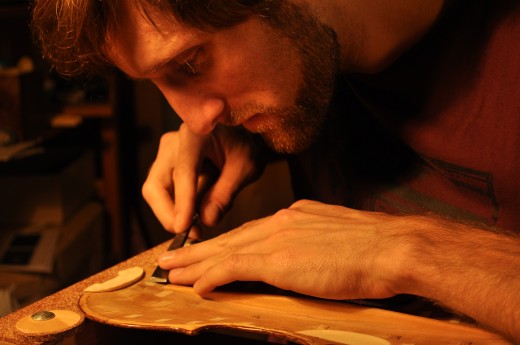
Your journey towards the violin handicraft has been marked by many world schools. Is there a shortcut to that journey? For example by doing some courses as it is the case in other professions?
Violin making is a handicraft demanding a lot of experience. This trade involves the focus on details and acoustic nuances. And that, in my opinion, requires a long period of educating oneself in this field. There are all sorts of ways how to do that. However, it is necessary to get hands-on experience with many instruments and meet many musicians. You also need to spend long hours improving yourself in this field till you understand fully what this handicraft is really about.
Could you speak briefly about your development in hands- on experience versus theory?
I attended a musical art school in my early childhood and in my youth years. After that, like many others violinmakers, I was studying violin handicraft in an internationally acclaimed violin-making-school in Mittenwald. I underwent compulsory work experience in a specialized workshop for bows in „Wörz“ in Munich, then in a double-bass workshop Krahmer- Pöllman in Mittenwald and finally in a the violin workshop in „Stam“ in Utrecht in the Netherlands. After that I spent a few years as a trainee in a renowned double- bass workshop Krahmer- Pöllman.
I carried on with my studies in France in the violin workshop Planchat in Clermont- Ferrand and in Paris.
After that I did a voluntary work as a violin maker in the Himalayas in a the well- known Gandhi-Ashram-School for children studying the violin playing.
My last study venture was in Markneukirchen, at the university of applied arts with the specialisation instrument making. Last year I successfully passed the exams for a violin master with honours. I am just about to open my own violin workshop „Geigenbauatelier Augsburg“ on Wertachstrasse 29a in Augsburg.
How many “rejects” did you have to make before you produced the right violin- the one that sounds great and looks great?
It takes time before a trainee becomes a master in his field. Rejects are rare thanks to a good professional accompaniment. However, years pass by before you really make the first- class product. I remember that moment very well. I had tried many ways before I eventually found the right one, the one which I could identify with. Suddenly I realized something. I loved the instrument by just looking at it and above all I was taken aback by its warm and soft tone and equally by its power. I had been waiting for that moment for a long time and finally I was awarded.
How much wood do you roughly need for one instrument? And which kind do you take into your consideration?
I work in a traditional way. I use exclusively spruce for the soundboard and the cover and burnt maple for the back plate, the ribs and the neck. The fingerboard is made of ebony.
It’s not necessary to use much wood for making a violin. For a double- bass we need huge trees.
How old must the resonance wood be? How do you know that it is the right one for violin making? Do you look for the right wood yourself?
I check every single piece of wood. The look, the sound and its physical properties are very important. It depends on various factors. The choice of wood is a major factor for an instrument. I use the wood at least 6 years old for violins. I had been living in the Bavarian Alps for some time. I was lucky to choose the wood in the forest and buy several trunks. Therefore I could bring stability and consistence into my instruments.
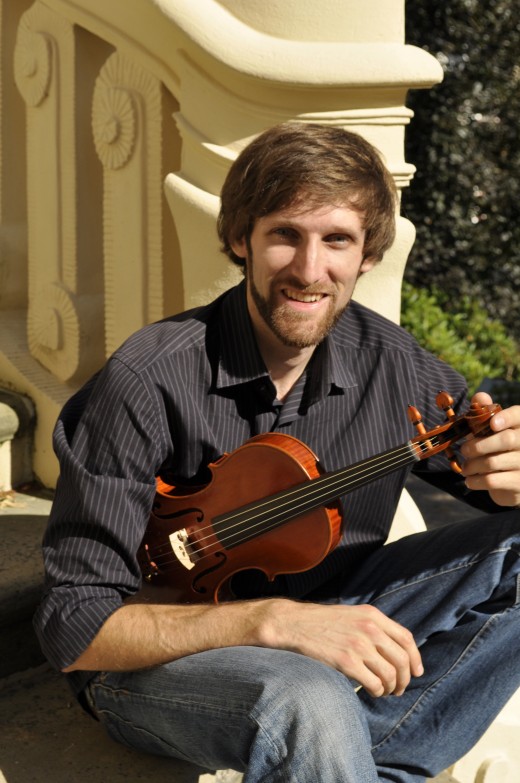
Is there any material that can be replaced by the one used by the old masters 400 years ago? Has the new era brought any progress into this field?
Spruce and maple were also planted 400 years ago. You can find this resonance wood in its best quality in the Alps and the Carpathian mountains today as well as in the past. It's still leading to the best acoustical results.
Which novelties in this field are the most efficient? Where has the modernization failed? Where wouldn’t you recommend it?
It’s clear that a piece of wood is a natural product and it hides its own individuality. The artificial homogenous materials such as the carbon, nowadays partially used for violin making, are staying behind. Each musician is looking for its own tone and instrument. The differences are a must. For students, in violin making and specifically in making the bow, the carbon is a financially acceptable alternative.
When are you sure that the instrument is finished, it is perfect and you feel satisfied?
I feel the right moment from the very first tone that the instrument produces. If it’s a success, it springs over and I fall in love. These moments are wonderful.
Nevertheless, the instrument is far away from being ready. The tone can be adjusted in many ways afterwards. At this stage it’s necessary to co- operate with a musician. More ears are necessary, more instruments for comparison and for a warm- up phase. The instrument is ready the moment it is handed over and the musician is happy with the result. I am very happy and satisfied in the evening, in a concert hall when my instrument starts resonating.
Do violins have its particular future owner while they are being created?
It depends on several circumstances. I usually get several contracts for particular instruments from musicians themselves.
Who is the first to play the violin? Are there any traditions or superstitions involved? Do you baptize violins?
I am the first one to play a new violin. I like the moment and I try to do it on my own. This moment is a reward for all those long hours spent while creating it. I start quietly and then I try to get various stages of tones while being careful not to overstrain the instrument or even offending it.
Does a violin art have any secret that you cherish against the competition? Or is it more about an open co- operation and handing over your experience?
Violin makers have always guarded a lot of little secrets. However, it was at university that I had realized that an exchange of knowledge and ideas has a big potential. On one hand an individual tries, searches and explores things for the whole year, on the other hand other five people work for five weeks only and they manage to get wider picture of it all. Eventually the knowledge is one thing and final handmade work is totally different thing!
What do you need to know about the wood before you even touch it and work on it? How long is the journey before the wood becomes a master instrument?
I need the thickness of the wood and the speed of the mechanical oscillation, as well as the moisture and its age. It gives me a lot of information about the quality of the wood and also the thickness of the resonance lid top plate and resonance back plate and also about the form of the vault needed.
A master work of art represents roughly 130 hours of labour. If it is possible, I do the wood-work in one flow. More time is needed for varnishing because of the drying process.
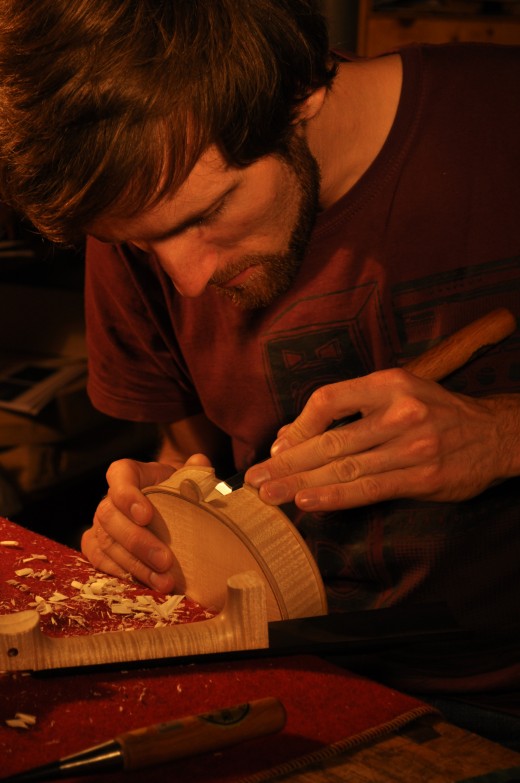
How is a master violin marked? Is there any duty with regards to a protection against forgery etc.? Where do you put the label of its origin? Is it always author who does it?
Yes. It is not always that easy. You can find many old violins with false tags of the names of the famous masters. I am sure there are hundred thousands of the tags with Stradivari.
I always stick the tag with my name and date into the ready instrument. Now I brand the instrument with my initials JB. You can find several of these inside the instrument.
Which parts of violins can be renovated and which ones can’t? Is the restoration of violins accompanied by any difficulties? Are you experienced in restoration?
Restoration is an important pillar of my work. Wood is an excellent material and makes possible fixing almost every damage. During my apprenticeship I held in my hands magnificent old Italian violins by Nicola Amati, Antonio Stradivari, Guarneri del Gesú and Domenica Montagnan (to mention at least the most famous ones). I played all those instruments and partially was restoring them too. They are beautiful instruments. I was honoured to work on them. At the moment I am working on the violin by Gand Père who is a great French master. The instrument was totally damaged and I had to put it back together from many small pieces. If the restoration is done properly, the instrument will glow with its own original undisturbed beauty. Then the effort will pay off.
Do you have any strange story related to your violin?
It is always very exciting to find great resonance wood in a forest. Once I took my parents for a hike around the Alps. I found excellent spruce trunks while walking towards a chalet. I met a the forester and a woodcarver in the chalet. We managed to cut the trunks the same day. One of the spruce trunks is so straight and perfectly grown. I had never seen anything like that
before.The violins that I make from that wood have beautifully warm and powerful tone.
Do you also built violas, violoncellos and double-basses?
I also make violas. I leave violoncellos to my colleague in my workshop in Augsburg. She specializes in that production. In the workshop Krahmer-Pöllmann I worked in the production of double- basses. I am very good especially in repairing and adjusting the sound of double- basses.
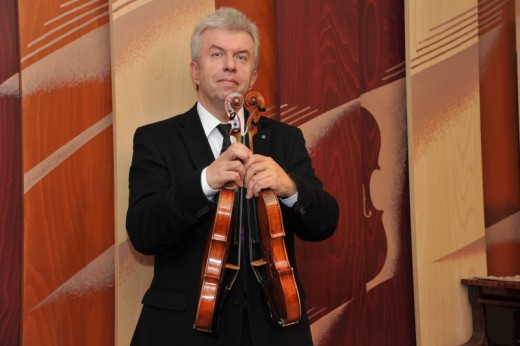
Which achievements are you proud of? And which goals do you have?
I have taken part in many competitions in Germany, Italy and the Czech Republic. This year I came first in an international competition of the violin making in Luby. Apart from that, I was awarded the best young master of 2012 in the instrument making handicraft.
Who are the people you heard playing your violin? What is your relationship with artists? Is it part of this handicraft to become friends with musicians, to get to know their world and their relationship towards the instrument? What does it mean to you?
These musicians are scattered all around the Europe. Mostly I have very good and very friendly relationship with them. I make sure they are happy with their instrument. However, these musicians are my teachers at the same time. I learn thanks to their criticism, advice and wishes.
I know that Jaroslav Svěcený, a Czech violin virtuoso and court-appointed expert of the string instruments plays your violin. The violin came first at the international tone competition in Luby near Cheb. He told me you varnished some violins in an old way. What does it mean exactly?
I imitate the look of the old instruments. The charm that an old instrument sparks is fascinating. Our eyes make it possible to keep discovering things. The use-up, damage, retouching etc. made the unique picture. A new perfect violin in contrast with that gives a bit boring and sterile impression. I imitate the patina of the old instruments and I am admired by musicians for that.
What inspires you to make violins that are undistinguishable from their Italian origins? Who in particular inspires you?
I am inspired directly by the old instruments. I am fascinated again and again by these instruments in a unique way. I was drawn to the violin by Jakob Stainer from Absam
(Austria). The violin made warming, soft and healing tone. I always get goose flesh when I study the forms of violin vaults by Guarneri del Gesú. The quality of varnish by Stradivari is really unique. I am doing my best to transform these things, I'm fascinated about into the instruments I'm making.
What fulfils you in your professional life? What are you dreaming about?
It is amazing to be able to have a profession where I can put into practice the creative process of a product by myself and from the very beginning. I am the one who finds the wood in a forest, then cuts the wood up, stores it and finally makes an instrument. Then I varnish the product and finally I sit in a concert hall and listen to it. You have to agree that it is breathtaking.
I have been dreaming about a workshop where violin making could be connected with a concert culture even more. My inspiration is to hear and to see playing the instrument. During those moments I can understand a real sense of my skill and I am overwhelmed by the need to create. A small concert hall right beside the workshop where concerts would be organised- that would be amazing. There is such a concert hall in Augsburg, next to our workshop. It hasn’t been used yet…
Thank you for the interview.
Text: Michaela Lejsková
Photo: archive of Jan Bacher
Translation into English: Mgr. Radana Kořínková
Publisher: magazine Best of www.ibestof.cz
Jan Bacher
Oberer Markt 27
08258 Markneukirchen
Jan-Bacher@gmx.de
*25.04.1982 in Heilbronn
Geigenbauatelier Augsburg
Wertachstrasse 29a
86153 Augsburg
Tel.: +49 (0)821 54392104
09/2003 - 02/2007 Apprenticeship in violin making at the violin making school in Mittenwald
03/2007 - 12/2008 Violin maker at Pöllmann-Krahmer GbR Mittenwald, Germany
01/2009 - 03/2011 Violin maker at SARL Planchat (Clermont-Ferrand, France)
04/2011 - 06/2011 Violin maker in the Gandhi Ashram School (Kalimpong, West Bengal, India)
10/2011 - 07/2012 Student at the „Westsächsische Hochschule Zwickau“
subject: musical instrument making
06/2012 Winner of the international violin making competition in Luby (Czech Republic)
Since 07/2012 German „Meister“- titel in violin making
Since 07/2012 Independent violin maker in Markneukirchen and Augsburg
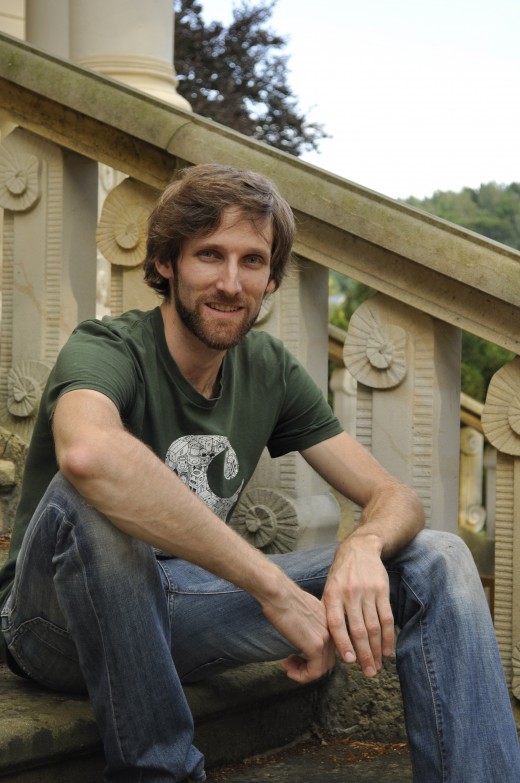
Jan Bacher- maître de violon (Français traduction)
http://www.ibestof.cz/hudba/jan-bacher--ma%C3%AEtre-de-violon-fran%C3%A7ais-traduction.html
Jan Bacher – Geigenbaumeister (Deutche Übersetzung)
http://www.ibestof.cz/hudba/jan-bacher-%E2%80%93-geigenbaumeister-deutche-%C3%9Cbersetzung.html
Jan Bacher - výrobce mistrovských houslí
http://www.ibestof.cz/remeslo-/jan-bacher---vyrobce-mistrovskych-housli.html
Komentáře
02.02.2025 | Věda a výzkum
 Kategorie
Kategorie
Příbuzné články
10.06.2024 | Vystudoval polygrafii a Obchodní akademii v Praze. Řadu let působil jako profesionální a umělecký ...
15.04.2024 | Narodila se v Příbrami, ale nejvíce vzpomínek má na Prahu. Vystudovala Střední odbornou školu ...
18.11.2022 | Marta Balejová patří mezi nejvýznamnější české šansoniérky současné doby. S hudbou začala ...
24.10.2022 | Markéta Fassati vyrůstala ve světě hudby odmalička. Narodila se do rodiny dirigenta, sbormistra ...
19.09.2022 | Podmanivý hlas mladého zpěváka je skoro k nerozeznání od originálu. Ačkoliv se narodil v Praze, ...
Newsletter:
Best of ... na Facebooku! Nejčtenější články za měsíc













